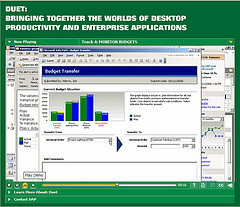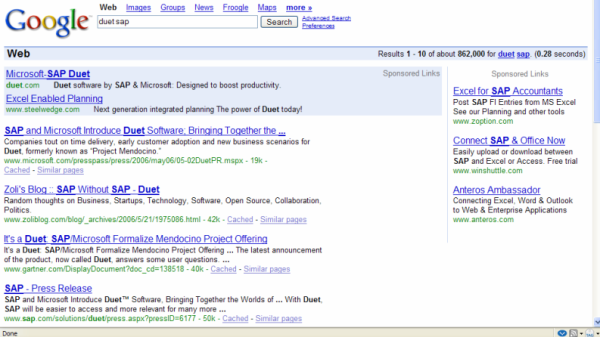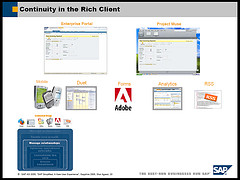WebEx has traditionally been known for its Web-conferencing, but it clearly aims to be more: they just announced their own “AppExchange” labeled WebEx Connect: a collaborative platform to combine WebEx’s own strengths in web-conferencing, IM, document sharing …etc. with applications from their ecosystem partners, which initially include BMC, Business Objects, Genius, MindJet, NetSuite, SoonR, SugarCRM and Zoho.
Clearly, the partner-list is not (yet) comparable to the AppExchange, but this is really a pre-launch announcement, largely aimed at soliciting more ISV’s – by the time of the anticipated availability at Q1 2007 there should be a lively ecosystem around WebEx Connect as the collaboration and workflow engine.
Talk about engine, it’s based on technology from Cordys, a BPM/SOA platform company founded by none other but Jan Baan whose ERP company gave SAP a run for their money in the 90’s, especially in manufacturing. Business Process, Workflow expertise from Baan + Collaboration from WebEx = sounds like a promising marriage to me.
Why WebEx? There is a simple answer… actually there are 2 million answers – that is the number of WebEx’s current user base, becoming available to partner ISV’s. That’s about 4 times Salesforce.com’s reach.
It’s probably a low-risk speculation that we’ll see more of these “ecosystems” emerge, as application companies strive to reposition themselves as platforms. Eventually AppExchange won’t become *the* platform and neither will Webex Connect – they will be one of several platforms, with ISV’s supporting several of them, collaborating here, competing there. Back-scratching some, back-stabbing some…
If you’d like to know more, the best chance to meet most of the above mentioned companies is at the Office 2.0 Conference. 
Update: Related posts below.
Tags: Webex, webex+connect, BMC, Business+Objects, Genius, MindJet, NetSuite, SoonR, SugarCRM, Zoho, ecosystem, Appexchange, cordys, Baan, Jan+Baan, mashup, enterprise+mashup, collaboration, integration, soa+platform, bpm, bpml, bpms+






Recent Comments